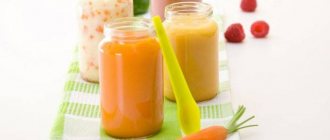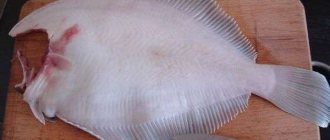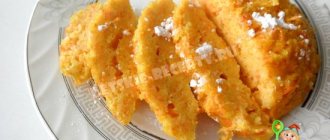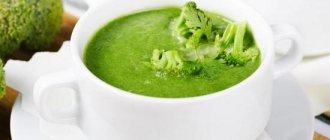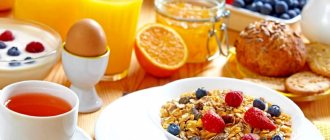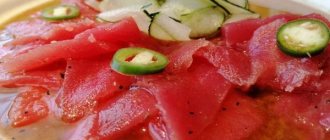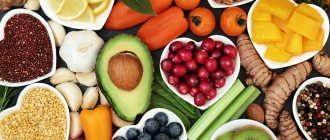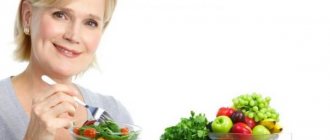Features of baby food
When forming a daily diet, it is necessary to take into account a number of characteristics of the child’s body.
Rapid growth
Harmonious and balanced growth is possible only if a sufficient amount of protein is supplied to the body. This means that you cannot do without meat products, eggs and dairy foods. But the diet is not limited to proteins only. Fats and complex carbohydrates are no less important. You can’t concentrate on monotonous food.
High mobility
Children are constantly on the move, thanks to which their metabolism works smoothly and harmoniously. You cannot limit a child’s mobility, for example, constantly prohibit him from running and playing, since this is fraught with problems with the secretion of growth hormones, which entails developmental delays.
With proper nutrition, the child must move a lot.
Constant consumption of sweets
Children love sweets, which is explained by their high metabolic rate. You cannot constantly deny them the consumption of these products, but it is important to include mainly sweets of natural origin in their diet - they do not harm the body.
Cholesterol
People tend to think of cholesterol as a “bad” substance, but in childhood it is very important. It is the main component of the membrane that surrounds the cells of the entire body. Child growth involves the constant formation of new cells.
Regulatory mechanisms in childhood
These are the mechanisms responsible for the consumption and expenditure of energy. In simple words, the child’s body itself probably knows what food and in what quantities it needs. Provided that the child’s diet is not oversaturated with dishes with an abundance of harmful spices, he will understand what he needs.
It is important that the diet does not contain a lot of fatty, sweet, spicy and unhealthy foods, otherwise it will be the taste buds, not the body, that coordinates consumption.
Basic principles of nutrition
Before creating a menu, you need to listen to a number of general recommendations that will help make your diet more saturated and eliminate everything unnecessary from it.
Rule one - “no” to strict regime
Of course, eating by the hour is a good practice, but it is more suitable for adults. The child's body may require food earlier or later than planned.
If the child is not hungry, there will be no benefit from eating. If he wants to eat not 3, but 5 times a day, it means that the body needs additional resources. You cannot help your child with food or, conversely, force him to eat when he doesn’t want to.
Rule two - no violence
“A spoon for mom, a spoon for dad, for grandma, for grandpa” is the most popular way to get a child to eat. It’s even worse if the phrase “You won’t get up from the table until you finish eating” has become part of parents’ everyday life. It is important to understand that the child does not want to eat because the body does not require resources, and not because of whims.
Basic Rules
It is important to teach a child to eat habits from childhood; for this it is necessary to adhere to the basic principles of nutrition. These include:
- Fractional diet. A child should eat at least 5 times a day (2 snacks, 3 main meals). Portions are small, including first and second courses.
- Attractive appearance. Dishes can be decorated in different ways using healthy and colorful ingredients. This will help to involve your preschool child in the cooking process.
- Eating together. Parents should show their children how to eat properly by example. To do this, it is recommended to eat at the same time as the child.
- Adjusting your diet. It is necessary to completely exclude fast food dishes (mashed potatoes, noodles), fast food and smoked foods from it.
Forcing a child to eat this or that dish is strictly prohibited. Compulsion creates associations in the subconscious with the fact that most healthy foods have an unpleasant taste.
It is important to pay attention to the method of cooking: vegetables, meat and fish are boiled, baked or steamed. Frying and deep-frying should be avoided; light sautéing is acceptable.
Caloric intake of a child's diet by age
The total calorie content of a child's daily diet varies depending on age. The necessary data is given in the table.
| Child's age (years) | Caloric content of food (kcal) |
| Up to 1.5 | 1300 |
| 1,5-3 | 1500-1600 |
| 3-6 | 1900 |
| 7-14 | 2000-2500 |
| 15-18 | 2500 |
The need for exactly this amount of calories is due to the following factors:
- Infants have just begun to form. Their digestive system may become disrupted or have difficulty processing food - this is normal. The child spends energy, but most of the time he lies down or sleeps, this is due to the relatively low need for calories, which can be met by breast milk and infant formula.
- Children under 3 years of age are just getting used to the “adult” diet, but their body continues to develop, requiring more calories than needed for infants.
- Preschool children need more calories as they begin to experience intellectual stress, which is sometimes unusual for them. They are active and inquisitive, they need energy for full growth and development. The active growth phase needs to be supported by external resources.
- Teenage schoolchildren are already completely switching to “adult” foods, but continuous puberty requires an increased calorie intake. During this period, food should be as natural as possible, healthy and rich in vitamins and minerals. At this age, a child is most prone to developing digestive diseases, including ulcers and gastritis. You need to make sure that he doesn’t indulge in fast foods at school or with friends.
- Children of senior school age are subject to increased intellectual and psychological stress due to the beginning of the exam period and difficult – in most cases – relationships with peers. The supply of vitamins and minerals should always be replenished.
Healthy food recipes for school-age children
A student's diet should consist of three main meals - breakfast, lunch and dinner. Between these doses, the child can have a snack if he feels hungry.
Breakfast Recipes
You can start a productive day with a simple but healthy breakfast. The student loves unusual and tasty dishes, and will certainly appreciate the following:
- Sandwich with tomatoes. Toast 2 slices of bread in the toaster. Place a tomato cut into slices onto one piece. Fry an egg and top with a slice of toasted cheese. Place the scrambled egg on the tomato and top with the second piece of toast.
- Quesadilla with meat and cheese. Take a tartilla, place pre-cooked or fried meat on it, and sliced mozzarella cheese on top. Top with a second tartilla and place in the oven until golden brown. You can use any meat, but pork or beef is better.
- Avocado toast. Toast 2 slices of bread in the toaster. Peel the avocado and turn it into a paste with a little lemon juice and olive oil. Grease the toast with the resulting gruel; if desired, place a hard-boiled chopped chicken egg or pieces of lightly salted fish on them.
Also excellent options for a schoolchild’s breakfast are all kinds of cereals with sugar or salt, cottage cheese with honey and nuts.
Lunch Recipes
For lunch, the child needs nourishing dishes. Recipes that will please even the most capricious schoolchildren:
- Baked cereal with apples and cranberries. Mix oatmeal with sugar and nuts. In a separate bowl, whisk milk with eggs and vanilla sugar. Mix the contents of these containers and leave covered for 15 minutes. Add chopped apples and cranberries to the mixture, mix, place in a baking dish and place in the oven for half an hour.
- Warm sandwiches. Grease slices of white bread with ketchup, place slices of Dutch cheese on them, and cut up baby sausages on top. Microwave the sandwiches for a couple of minutes, garnish them with herbs and lettuce.
Healthy food for children and more
Oatmeal - a healthy food and simple recipes made from oatmeal...
TOLOKNO is an original Russian dish, previously widespread and, alas, almost forgotten.
It is a pity that modern children do not know the taste of oatmeal, that adults deprive them and themselves of nourishing and healthy oatmeal dishes. This natural product of high biological value is a wonderful breakfast that only takes a few minutes to prepare. Previously, oatmeal was the first complementary food after mother's milk.
You can give oatmeal to children from 6 months.
Oatmeal is useful for nursing mothers to enhance lactation, for the elderly and for those recovering from serious illnesses and injuries.
Due to its high nutritional value and easy digestibility, oatmeal is a dietary product and an auxiliary remedy for many diseases.
- OIL RECIPES
Oatmeal is used to cook porridges, prepare drinks, jelly, desserts, and add it as a dressing to soups, broth, cabbage soup (1 - 2 teaspoons per plate), and to casseroles. Oatmeal can be added to any flour products to improve their nutritional and dietary properties.
-BREAKFAST FROM OIL
Dilute 1-2 tablespoons in a glass of warm milk, kefir, yogurt or just in water and let stand for 5 minutes until the flour swells. Add salt, honey, grape or brown sugar to taste.
-PORRIDGE FROM OIL
Dilute the oatmeal in lukewarm salted water so that there are no lumps.
Bring to a boil, stirring. At the end of cooking, add sugar or honey. The finished porridge can be coated with butter.
-KISEL from oatmeal.
Milk – 300 ml, water – 100 ml, oatmeal – 30 g,
brown sugar or grape sugar (honey can be used) - 50 g.
Preparation:
Grind the oatmeal with water, gradually add milk and cook for 5-10 minutes. After cooking, you can add sugar or honey.
-BERRY DESSERT
Beat 200 - 300 g of berries (cranberries, lingonberries, strawberries) with 100 - 150 g of oatmeal. Add 4 tablespoons of brown sugar (grape sugar).
Divide the mixture into vases.
-FRUIT PORRIDGE FROM OATIC
The theme of World Consumer Rights Day is to combat the spread of unhealthy diets among children.
1) In a thick-bottomed saucepan, cook dried fruit compote, adding sugar and salt, pour oatmeal into the boiling compote, stir thoroughly, remove the pan from the stove and let stand for 5-10 minutes. If you want a fruity oatmeal jelly, then reduce the amount of oatmeal.
300 g dried fruits, 10 tbsp. spoons of oatmeal, 6-7 tbsp. spoons of sugar, 1 liter of water, salt to taste.
2) Pour 200 g of frozen berries with water so that the liquid in the pan is 2 cm above the berries, add sugar and salt to taste, bring to a boil and remove from the stove. Add 3 tbsp to the berry mass. spoons of oatmeal, stir. You will get a thick porridge, keep it covered for 5 minutes, then dilute it to the desired consistency with warm milk or cream.
3) Pour the juice into the pan, bring to a boil, pour in the oatmeal in a stream, stir thoroughly and remove from the stove. You can add banana pieces to the porridge. If you add only 1 tbsp to the juice. spoon of oatmeal, you get a tasty and healthy jelly.
2 tbsp. spoons of oatmeal, 200 - 250 ml of any fruit juice.
Oatmeal porridge WITH KVASS
Dilute oatmeal 0.5 tbsp. kvass, grind thoroughly so that there are no lumps, add the remaining kvass, honey or salt. This porridge is especially good in hot weather.
3 – 4 tbsp. spoons of oatmeal, 2 tbsp. kvass, honey, salt to taste.
- Oatmeal dumplings
1 tbsp. oatmeal, 2 tbsp. milk, 2 eggs, salt to taste
Mix oatmeal thoroughly in salted water, add eggs, mix again.
Make dumplings from the resulting dough, dip them in boiling milk and cook for 8-10 minutes. Serve on the table in the milk in which they were boiled.
-PORRIDGE FROM POISH AND FLAX FLOUR
2-3 tbsp. spoons of oatmeal, 1 tbsp. water, 1 tbsp. a spoonful of flaxseed oil, 1 teaspoon of flaxseed flour, a pinch of salt, sugar - to taste.
Thoroughly stir the oatmeal in lukewarm salted water, add sugar, place on the stove, bring to a boil, but do not boil. Let stand for 3-5 minutes. When serving, drizzle with linseed oil. 1-2 minutes before boiling, add flaxseed flour to the oatmeal, the food will become even healthier.
- Oatmeal pancakes with fruit
1 tbsp. oatmeal, 3 tbsp. l oatmeal, 1.5 - 2 tbsp. kefir, 2 eggs, 1-2 apples, 0.5 tbsp. raisins, 2 tbsp. l. sugar, 1 tsp. salt
Mix oatmeal in a bowl with oatmeal, gradually, stirring, pour in kefir, cover the bowl with a napkin and leave for 2-3 hours. Then add eggs, coarsely grated apple and/or raisins, sugar and salt to taste, mix thoroughly and bake the pancakes in a hot frying pan. If you reduce the amount of kefir, the mass can be placed on a baking sheet and baked in the oven.
-TOIL DESSERT
Grind any nuts into powder in a blender, add 1 tbsp. boiling water, beat in a blender, let cool. Add oatmeal, chopped walnuts, honey, lemon juice, salt to taste and stir thoroughly.
1.5 tbsp. spoons of any nuts, 5 walnuts, 0.5 tbsp. oatmeal, 0.5 teaspoon each lemon juice and honey
-KULAGA FROM OWL
1 kg of berries, 100 g of oatmeal, 200 g of sugar, honey
Preparation:
Pour a small amount of water over the berries, put on the fire, and bring to a boil.
Add brewed oatmeal to the berries, gradually add sugar during cooking and steam in a water bath for 30 minutes.
Add honey at the end.
The simplest oatmeal dish in the old days was kulaga. Kulaga is a mass mixed in cold boiled water and seasoned with salt. When the mass hardened, it resembled dough from which various animals were molded.
Another way of consuming oatmeal was to knead it with water or kvass, salt it and roll it into sausages - “zapyatinki” (or “bulls”). There was a proverb about him: “The quickest food is oatmeal: knead it and put it in your mouth.” They also prepared dezhen - oatmeal with cottage cheese and milk or cream. Gradually the range of oatmeal dishes expanded.
-CHEESE CAKES WITH OIL
Ingredients: 250 g of cottage cheese, egg, oatmeal 5-6 tbsp. spoons, soda (quenched with vinegar) – 0.5 tsp,
salt, sugar.
Preparation:
Beat the cottage cheese with a blender or rub through a sieve.
Add an egg to the cottage cheese (can be replaced with flaxseed flour or an apple), soda, salt and sugar to taste, as well as enough oatmeal to get the dough of the consistency you need.
Make cheesecakes, roll them in oatmeal and fry for a short time on both sides in hot oil.
-BENEFITS OF OIL
Doctors recommend eating oatmeal dishes for:
— chronic inflammatory diseases;
- diseases of the gastrointestinal tract, low acidity of gastric juice, sluggish digestion;
- liver and kidney diseases;
— oncological diseases;
— metabolic disorders;
- anemia;
- tuberculosis;
- nervous fatigue, stress and depression;
- skin diseases.
Due to its healing properties, oatmeal is used not only in everyday cooking, but also in medicinal purposes. Just a teaspoon of this product provides 20% of the daily protein requirement for adults, and two spoons reduce blood cholesterol levels by up to 10%.
For health purposes, it is used in the form of jelly, decoctions and porridges, for compresses and baths.
Oatmeal can also be used for cosmetic purposes. There are many recipes designed for different skin types.
Source: rus-health.info
If this article on our website was useful to you, then we offer you a book with Recipes for living, healthy nutrition.
Vegan and raw food recipes from famous Italian chef Angela Agrati-Prange
. We also offer you a selection of the best materials on our site according to our readers. You can find a selection of the TOP best articles about a healthy lifestyle and healthy eating where it is most convenient for you: VKontakte or Facebook
If the page is not displaying correctly, the video is not playing, or you find an error in the text, please click here.
News from our partners
Healthy food recipes for preschool children
Preschool children rarely eat according to a schedule, so we’ll just give you a few tasty and healthy recipes that any child will like. He will show you when to feed your baby.
- Children's soup. Take lean meat and boil it in clean bottled water for about half an hour. Add vegetables to it, such as potatoes, carrots, onions, avocado. You can take whatever vegetables your child likes. Leave to cook for another 15 minutes. If the child’s age and taste preferences allow, the meat can be finely chopped and also added to the soup. This recipe also makes a puree soup that is original and tasty – just grind all the ingredients.
- Baby meatballs. Grind lean beef by adding an egg and a little salt. Grate the carrots, finely chop the onion and lightly fry them for a minute. Mix the minced meat with vegetables, form the mixture into meatballs, lightly brown them in a frying pan and place in a saucepan. Do not pour out the oil from the frying pan, add a little flour and milk to it, stir, sprinkle with natural spices and herbs. Pour the sauce over the meatballs and leave to simmer for 20 minutes.
- Fruit salad with yogurt. Cut fruits that your child likes, such as apples, bananas, pears, kiwis, and strawberries. You can also additionally chop raisins or cheese. Season all ingredients with natural yoghurt. During the holidays, you can use ice cream instead of yogurt.
As you can see, a child’s diet can be varied and tasty, and it is not necessary to use unnatural products. The above ingredients can be replaced with similar ones if desired, new ones added or old ones excluded. Experiments are always profitable and tasty.
Pancakes
Airy and fluffy pancakes are a wonderful childhood memory for many parents.
The dish is perfect for breakfast at the family table.
Summer pancakes
With this recipe you can introduce healthy greens into your children's diet.
Ingredients:
- kefir - 1 tbsp.;
- soda - on the tip of a knife;
- greens - 1 bunch;
- egg - 1 pc.;
- salt - 1 pinch;
- flour - 2 tbsp.
Cooking plan:
- Combine kefir and egg. Stir gently.
- Add soda, salt and chopped herbs. Whisk everything again.
- Add the sifted flour little by little, stirring thoroughly.
- Heat a frying pan with oil and bake until done.
Apple-pear pancakes
You and your baby will undoubtedly enjoy this delicious homemade dish.
Components:
- pear - 2 pcs.;
- flour - 2 tbsp. l.;
- salt - 1 pinch;
- cream - ½ tbsp.;
- apple - 2 pcs.;
- sugar - 1 tbsp. l.;
- egg - 1 pc.
How to cook:
- Cut the fruit into small cubes; you can puree them. Transfer them to a container.
- Break an egg into the apples, add salt and sugar. Stir gently.
- Add cream. And, stirring, add flour.
- Pour oil into a preheated frying pan and bake pancakes as usual.
This quick breakfast is served with sour cream.
Vegetable pancakes
Since cabbage is a healthy product for children's breakfast, we will prepare the dish from it. For variety, you can bake zucchini pancakes.
You will need:
- cauliflower - 250 g;
- cheese - 20 g;
- flour - 30 g;
- chicken egg - 1 pc.;
- greens, salt - for taste.
Cooking diagram:
- Fill the cabbage inflorescences with water, add a little salt and let them cook. After boiling, no more than 5 minutes should pass. Once the vegetable is cooked, remove the liquid and refill the pan with cold water for 1 minute before draining again.
- Finely chop the cooked cabbage. Add flour, egg and grated cheese. Chop your favorite greens and add to the main mass.
- Mix everything thoroughly and add salt.
- Bake the pancakes in a frying pan heated with oil until done.
The relationship between nutrition and child development
Adequate nutrition and child development are closely interconnected. The diet must contain oils - olive, flaxseed, sunflower. Also, cheese, yogurt, milk, fish, wholemeal bread, peas, broccoli, beans, berries and fruits are required for the full development of mental abilities.
Of the minerals involved in the development of intelligence, magnesium, calcium, phosphorus, iron, sulfur, copper, zinc, and iodine. These elements not only contribute to development, but also “increase” natural abilities, for example, the ability to quickly learn foreign languages. Diet also affects memory development.
Vitamin E, C and all B vitamins increase the level of intellectual abilities, as does oxygen, sufficient quantities of which are found in tomatoes, onions, parsley, potatoes, mint and radishes.
That is, nutrition is directly related to intelligence, so parents should think about diet from the early years of the child. The sooner the diet is balanced, the greater the chance of successfully preventing problems with growth and development during school years and into adulthood.

